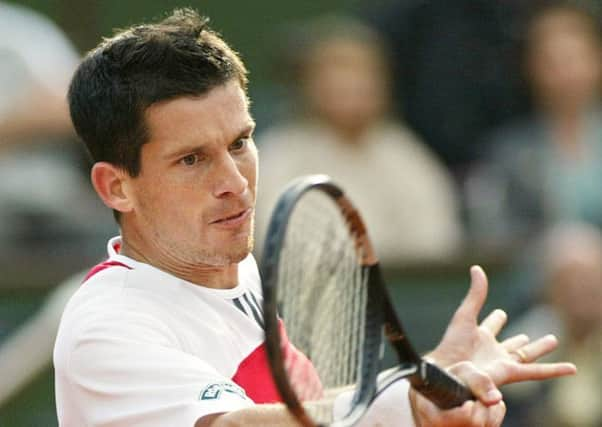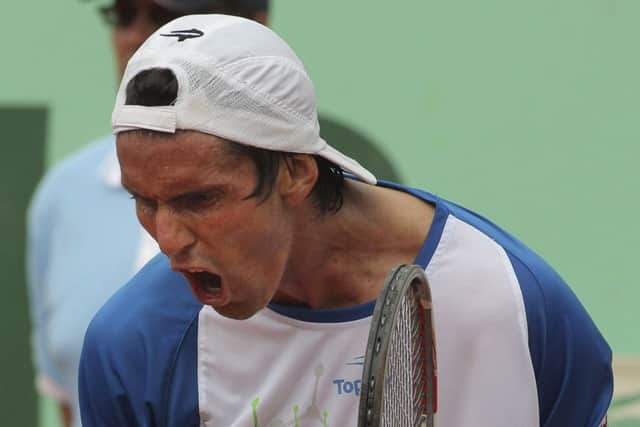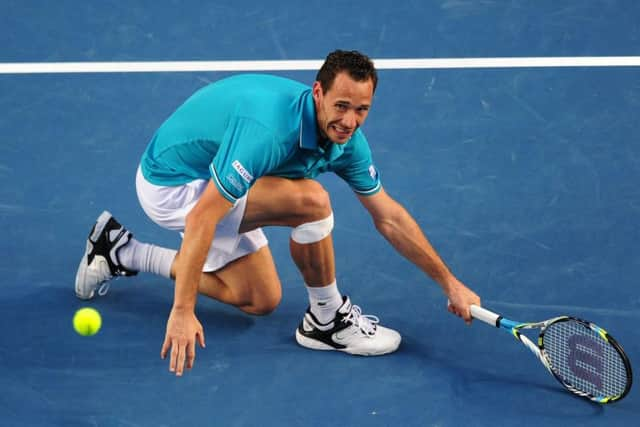Bygones: When red clay proved conducive to Tim Henman's unexpected French Open bid


Some may also derive a hard luck story of facing seven-time Wimbledon winner Pete Sampras
But perhaps Henman’s greatest chance to win a grand slam came on his least preferred surface, the red clay of Roland Garros in 2004.
Advertisement
Hide AdAdvertisement
Hide AdThe tournament, which sees qualifying for this year’s version begin today, has not been a hotbed of British success – even if the first championships went the way of H. Briggs in 1891.


Only Fred Perry has his name also engraved on the men’s trophy – winning the tournament in 1935 in a four-set win over Germany’s Gottfried von Cramm.
Andy Murray’s appearance in the final 12 months ago was the first since Bunny Austin lost the 1937 in straight sets to Henner Henkel.
Back in 2004, Henman was dubbed the ‘great clay-court explorer’ on his crusade.
Advertisement
Hide AdAdvertisement
Hide AdIn 10 previous attempts, the serve-volley specialist had not advanced into the second week in the French capital.


However, having reached 29-years-old, the popular hopeful found a new restraint to his eagerness towards rushing to the net and added a crisper backhand to boot.
The 2004 season had started poorly for Henman as he failed to make the fourth round at the Australian Open and the following Masters events passed by without him worrying the top seeds.
A flash of form arrived on the hard courts of Indian Wells in March as Henman reached the final where he suffered a 6-3 6-3 defeat to a young and emerging Roger Federer.
Advertisement
Hide AdAdvertisement
Hide AdThat run was swiftly followed by a quarter-final appearance on the clay of Monte Carlo, which put Henman back into the world’s top eight.


Yet, and crucially, Henman dropped out of it after defeats to world No 40 Marlano Zabaleta and world No 22 Andrei Pavel at back-to-back Masters events in the lead up to Paris – shunting him down to ninth seed.
Had Henman carried the eighth seed tag, he would have faced potential meetings with slam champions Marat Safin, Leyton Hewitt, Federer and three-time French Open winner Gustavo Kuerten in the top half of the draw.
Instead, Henman faced a quarter including an ageing Andre Agassi, plus a clay-phobic Andy Roddick and British counterpart Greg Rusedski.
Advertisement
Hide AdAdvertisement
Hide AdHowever, in a very Henman way, his adventure nearly ended before it had chance to begin.


Paired in round one with unseeded Frenchman Cyril Saulnier – a player with a career-best ranking of 48 – Henman conceded the first two sets to solitary breaks and looked on his way to a first-round exit in Paris for the first time in six years.
The tension began to ease in the third and Henman edged a tie-break.
Henman had never recovered from two sets down in a slam before, but as nerves increasingly took hold of the home hope, Henman wrapped up passage in a deserved 4-6 4-6 7-6 (7-2) 6-4 6-3 triumph.
Advertisement
Hide AdAdvertisement
Hide Ad“In the end I won on determination and guts,” said a fatigued Henman, who had suffered from a bug in the lead up to the tournament.
There were no such alarms in round two.
Full of confidence, Henman blew German Lars Burgsmuller away 6-0, 6-3, 6-3. And he made it nine successive sets to progress into the second week for a first time by sweeping Spaniard Gaoi Blanco aside 7-6 (7-3), 6-1, 6-2.
Thoughts of a British winner were starting to harbour as top seeds dropped out around the draw. Federer, impressive in his opening two rounds, crashed out at the third stage to clay-specialist Kuerten in straight sets, while fourth seed Juan Carlos Ferroro had fallen to Igor Andreev.
Second seed Roddick was also starting preparations for the grass campaign having lost to Oliver Mutis in round two, while Agassi, seeded sixth, had bowed out to Franch qualifier Jerome Heahnel on the opening day.
Advertisement
Hide AdAdvertisement
Hide AdNow into unprecedented territory at Roland Garros, Henman awaited French wildcard Michael Llodra, a fellow serve-volleyer, in round four.
What transpired was one of the most nervy and dramatic encounters of Henman’s career.
Llodra was ranked 94 in the world and had only previously made his mark on the game as a doubles player in the French Davis Cup squad. But the Parisian, then 24, was able to play Henman at his own game. His serve-and-volley counter-attack confused the Englishman and swiftly took him to the brink of a maiden quarter-final appearance with a break in the third, holding a two-set lead.
It seemed as though Henman’s adventure was over. But just as hard luck stories were being written, the British No 1 broke back, igniting the comeback.
Advertisement
Hide AdAdvertisement
Hide AdInto a decider it went, with Henman winning sets three and four 6-3, 6-4. As so often was the case, Henman’s first serve wavered with nerves and he faced match point on a tentative second serve when trailing 5-4 in the fifth. But a fierce forehand saved the day and Henman went on to take 12 of the last 13 points to wrap up victory 9-7 in the decider.
For Henman to strike back once in a tournament he had battled illness in was some feat. For him to do it twice, was extraordinary.
With character firmly built, Henman progressed to face 22nd seed Juan Ignacio Chela in the quarter-finals.
A clay specialist by trade, the odds were stacked in the Argentine’s favour. But, buoyed on by his courageous performances earlier in the tournament, Henman was to be a party spoiler as he eased through in straight sets, losing just 10 games.
Advertisement
Hide AdAdvertisement
Hide AdChela had been one of four Argentinians to reach the quarter-finals and the other three, David Nalbandian, Gaston Gaudio and Guillermo Coria, set up a famous semi-final Friday for the country.
Having reached three successive Masters finals, Coria became a clear favourite for the title. The world No 3 had yet to lose a set as he prepared to face Henman. But, like Llodra had done, Henman’s attacking nature surprised the Argentine as he took the first set 6-3.
Henman could have been forgiven for thinking this was his moment – three years after losing to Ivanisevic on Centre Court at Wimbledon. But, his exhibits in the tournament eventually caught up, and Coria – a speedster around the baseline – made him toil from the back.
The Argentine eventually turned the screw to seal what would prove to be his only grand slam final appearance – taking the fourth to love before wrapping up a 3-6, 6-4, 6-0, 7-5 triumph.
Advertisement
Hide AdAdvertisement
Hide Ad“I’m very proud of reaching the semi-final here,” said Henman. “And I’ll come back and hope to do better.”
Unfortunately, he was never able to, although a US Open semi-final appearance followed later in the year.
Despite the Englishman’s absence, the final still carried a Henman-esque spirit.
The unseeded Gaudio produced one of the great grand slam final comebacks to return from winning just three games in the opening two sets to secure the title 8-6 in the fifth.